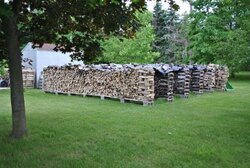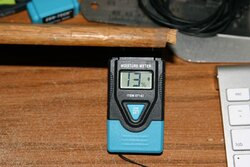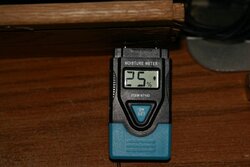Rich L said:
I think there is need of more thought about wood drying and the different geographic locations we live in.The responses indicate that wood drys faster or slower for folks with the same species who live in different places.
A while back I posted a link to a site that has the seasonal average
equilibrium moisture content (EMC) of wood exposed to outside air for hundreds of cities in the U.S. Based upon the average monthly relative humidity (RH) of the air in your area, wood will achieve a final EMC that can never get below that for your area, no matter how long you season it. This final EMC varies a lot geographically, but this info doesn't account at all for drying
rates. Since wood drying is both temperature and relative humidity dependent, local conditions may drastically speed up the process of getting to that EMC point. Wind, as well, will greatly accelerate the rate of water loss, even though in the end, the wood will only go down to the EMC of your area.
Most areas of the country have an EMC of between 12% and 18%. There is nothing you can do to drop it below that point short of storing it inside a heated space. However, the time it takes to get to EMC will be substantially decreased by storing the wood well off the ground in a sunny and windy location, in loosely stacked single rows facing the direction that best takes advantage of both the sun's path through the sky and the predominant wind direction. For me, that would be to have the stacks face the southwest, which works out to be the best place on my property for me to put it anyway.


 Single rows with 3' between them that get pretty good sun/wind most of the time.
Single rows with 3' between them that get pretty good sun/wind most of the time.


